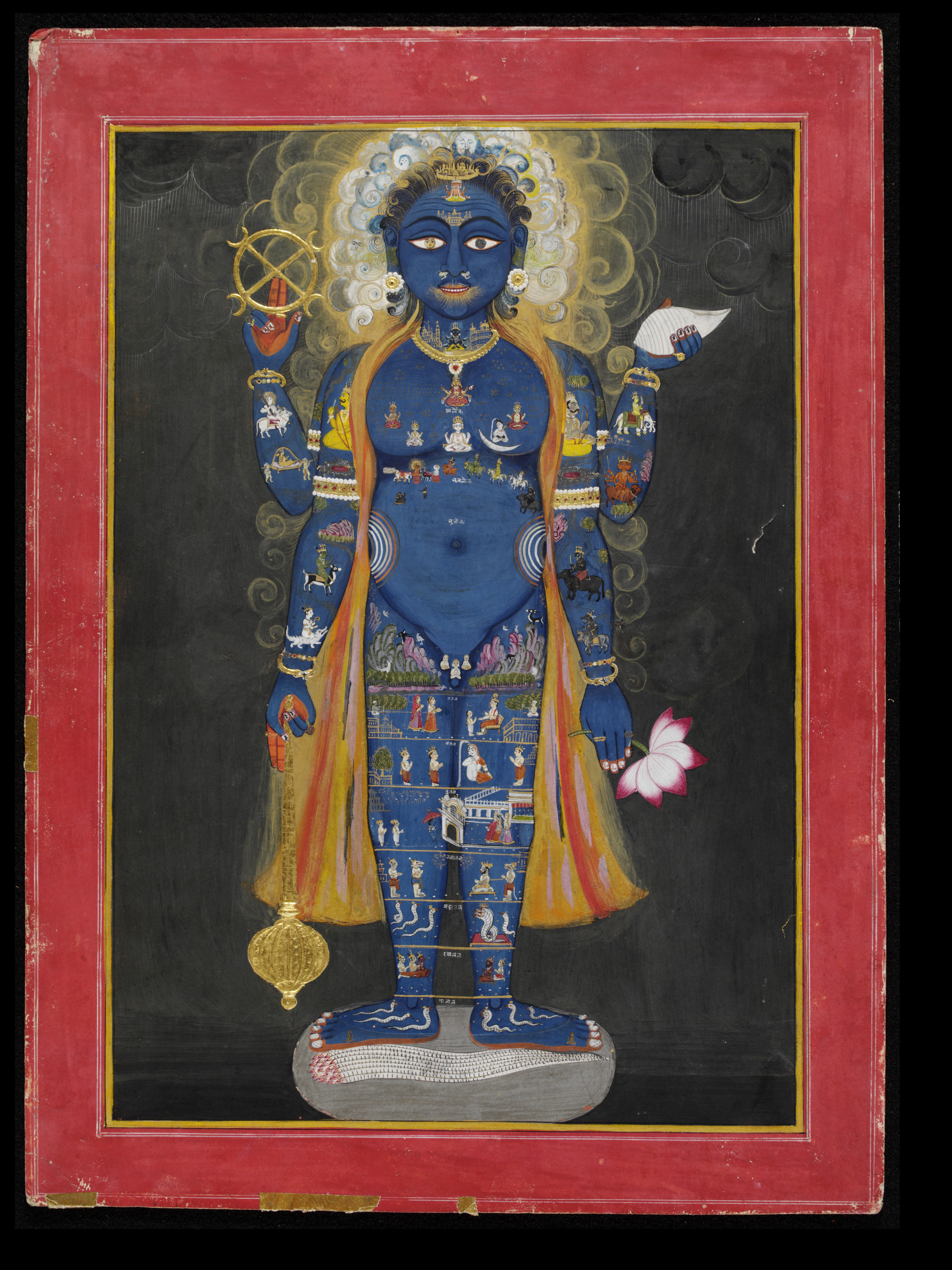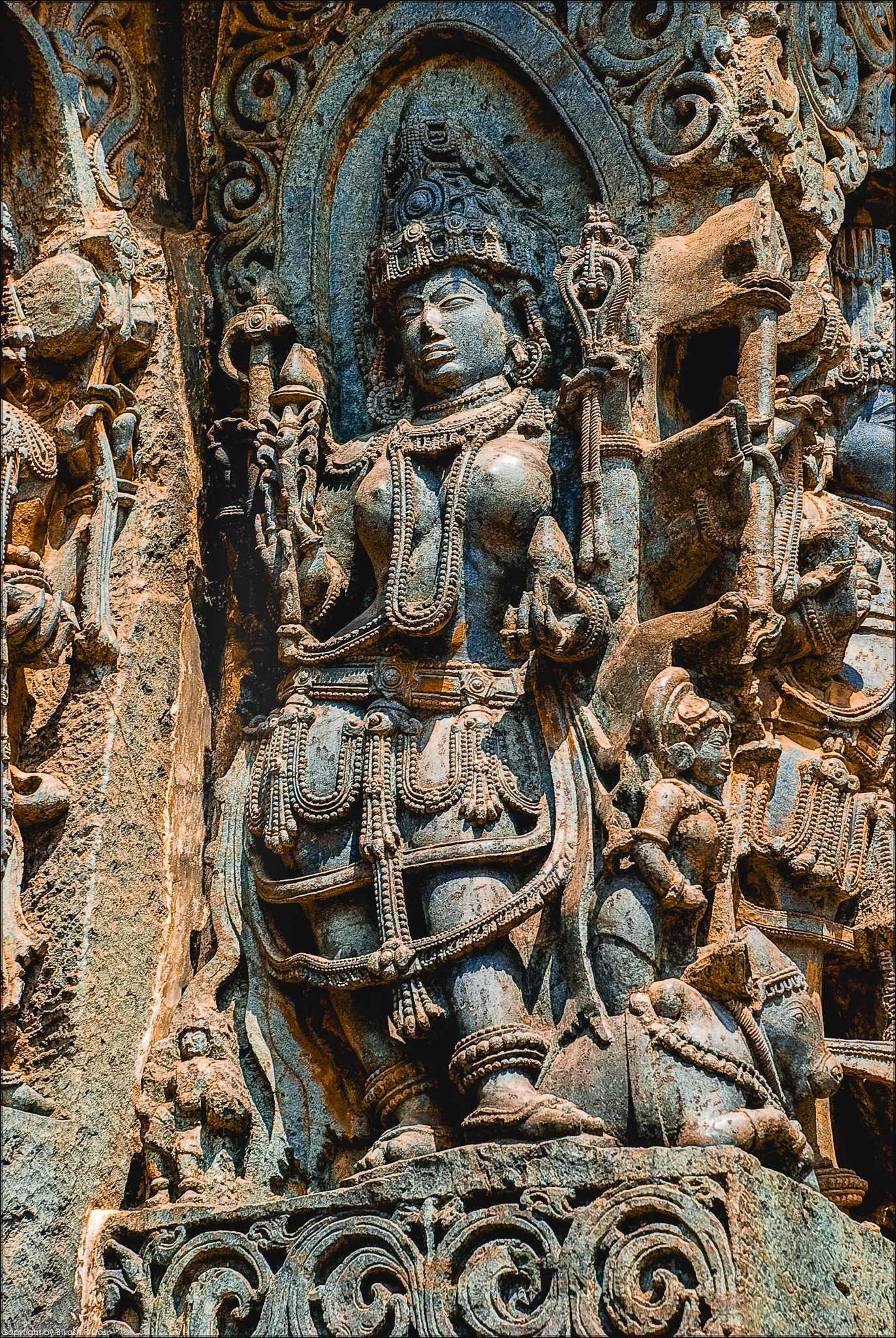|
Achintya-Bheda-Abheda
Achintya-Bheda-Abheda (अचिन्त्यभेदाभेद, ' in IAST) is a school of Vedanta representing the philosophy of ''inconceivable one-ness and difference''.pp. 47-52 In Sanskrit ''achintya'' means 'inconceivable', ''bheda'' translates as 'difference', and ''abheda'' translates as 'non-difference'. The Gaudiya Vaishnava religious tradition employs the term in relation to the relationship of creation and creator (Krishna, Svayam Bhagavan),''Madhya'' 20.108-109 "It is the living entity's constitutional position to be an eternal servant of Krishna because he is the marginal energy of Krishna and a manifestation simultaneously one with and different from the Lord, like a molecular particle of sunshine or fire." between God and his energies. [...More Info...] [...Related Items...] OR: [Wikipedia] [Google] [Baidu] |
Vedanta
''Vedanta'' (; , ), also known as ''Uttara Mīmāṃsā'', is one of the six orthodox (Āstika and nāstika, ''āstika'') traditions of Hindu philosophy and textual exegesis. The word ''Vedanta'' means 'conclusion of the Vedas', and encompasses the ideas that emerged from, or aligned and reinterpreted, the speculations and enumerations contained in the Upanishads, focusing, with varying emphasis, on devotion, knowledge and liberation. Vedanta developed into many traditions, all of which give their specific interpretations of a common group of texts called the ''Prasthanatrayi, Prasthānatrayī'', translated as 'the three sources': the ''Upanishads'', the ''Brahma Sutras'', and the ''Bhagavad Gita''. All Vedanta traditions are exegetical in nature, but also contain extensive discussions on ontology, soteriology, and epistemology, even as there is much disagreement among the various traditions. Independently considered, they may seem completely disparate due to the pronounced ... [...More Info...] [...Related Items...] OR: [Wikipedia] [Google] [Baidu] |
IAST
The International Alphabet of Sanskrit Transliteration (IAST) is a transliteration scheme that allows the lossless romanisation of Brahmic family, Indic scripts as employed by Sanskrit and related Indic languages. It is based on a scheme that emerged during the 19th century from suggestions by Sir Charles Trevelyan, 1st Baronet, Charles Trevelyan, William Jones (philologist), William Jones, Monier Monier-Williams and other scholars, and formalised by the Transliteration Committee of the Geneva International Congress of Orientalists, Oriental Congress, in September 1894. IAST makes it possible for the reader to read the Indic text unambiguously, exactly as if it were in the original Indic script. It is this faithfulness to the original scripts that accounts for its continuing popularity amongst scholars. Usage Scholars commonly use IAST in publications that cite textual material in Sanskrit, Pāḷi and other classical Indian languages. IAST is also used for major e-text repos ... [...More Info...] [...Related Items...] OR: [Wikipedia] [Google] [Baidu] |
Jiva Goswami
Jiva Goswami (; ) was an Indian philosopher and saint from the Gaudiya Vaishnava school of Vedanta tradition, producing a great number of philosophical works on the theology and practice of Bhakti yoga, Vaishnava Vedanta and associated disciplines. He is known as one of the Six Goswamis of Vrindavan and was the nephew of the two leading figures, Rupa Goswami and Sanatana Goswami. Biography Genealogy His family lineage can be traced to Indian State of Karnataka and Naihati in the district of North 24 Parganas in present-day West Bengal, India. The former generations according to ''Bhakti-ratnakara'': Sarvajna Jagatguru was a famous Brahmin, brahmana, great scholar in all Vedas, respected Yajurveda, Yajur-vedi of the Baradvaja caste, and king of Karnataka in South India, adored by all other contemporary kings. Sarvajna's son, Aniruddha, was spirited, famous, a proficient scholar of the Vedas, and a favourite of the reigning kings at the time. Aniruddha's sons, Rupesvara (eldes ... [...More Info...] [...Related Items...] OR: [Wikipedia] [Google] [Baidu] |
Vishishtadvaita
Vishishtadvaita (IAST '; ) is a school of Hindu philosophy belonging to the Vedanta tradition. Vedanta refers to the profound interpretation of the Vedas based on Prasthanatrayi. Vishishta Advaita, meaning "non-duality with distinctions", is a non-dualistic philosophy that recognizes Brahman (ब्रह्म) as the supreme reality while also acknowledging its multiplicity. This philosophy can be characterized as a form of qualified monism, attributive monism, or qualified non-dualism. It upholds the belief that all diversity ultimately stems from a fundamental underlying unity. Ramanuja, the 11–12th century philosopher and the main proponent of Vishishtadvaita philosophy, contends that the Prasthanatrayi ("The three sources"), namely the Upanishads, the Bhagavad Gita, and the Brahma Sutras are to be interpreted in a way that shows this unity in diversity, for any other way would violate their consistency. Vedanta Desika, another major scholar who significantly helped ex ... [...More Info...] [...Related Items...] OR: [Wikipedia] [Google] [Baidu] |
Turiya
In Hindu philosophy, ''turiya'' (Sanskrit: तुरीय, meaning "the fourth"), also referred to as chaturiya or chaturtha, is the true self (''atman'') beyond the three common states of consciousness (waking, dreaming, and dreamless deep sleep). It is postulated in several Upanishads and explicated in Gaudapada's '' Mandukya Karika''. Upanishads ''Turiya'' as 'the fourth' is referred to in a number of principal Upanishads. One of the earliest mentions of the phrase ''turiya'', "fourth", is in verse 5.14.3 of the Brihadaranyaka Upanishad (7th-6th century BCE), referring to a 'fourth foot' of the '' Gayatri Mantra'', the first, second and third foot being the 24 syllables of this mantra: According to Raju, chapter 8.7 through 8.12 of the Chandogya Upanishad (7th-6th century BCE) , though not mentioning ''turiya'', 'anticipate' the Mandukya Upanishad and it's treatment of ''turiya''. These verses of the Chandogya Upanishad set out a dialogue between Indra and Virocana, in se ... [...More Info...] [...Related Items...] OR: [Wikipedia] [Google] [Baidu] |
Shuddhadvaita
Shuddadvaita (Sanskrit: "pure non-dualism") is the "purely non-dual" philosophy propounded by the Hindu philosopher Vallabha (1479-1531 CE), the founder of ("The path of grace"), a Vaishnava tradition focused on the worship of the deity Krishna. Vallabhacharya's pure form ( nondualist) philosophy is different from Advaita. The Shrinathji temple at Nathdwara, and compositions of eight poets (), including Surdas, are central to the worship by the followers of the sect.Martin, Nancy M., "North Indian Hindi devotional literature" in Location The tradition is founded by Vishnu swamy in Southern India. He is known as the early founder of the Rudra sampradaya, one of the four main traditions of Vaishnavaites. Vallabhacharya founded the Krishna-centered Pushti-Marga sect of Vaishnavism in the Braj(Vraj) region of India. In modern times followers of Shuddadvaita are concentrated in the states of Rajasthan and Gujarat. Central Topics In the ancient Vedic tradition of knowle ... [...More Info...] [...Related Items...] OR: [Wikipedia] [Google] [Baidu] |
Paramatma
''Paramatman'' (Sanskrit: परमात्मन्, IAST: Paramātman) or ''Paramātmā'' is the absolute '' Atman'', or supreme Self, in various philosophies such as the Vedanta and Yoga schools in Hindu theology, as well as other Indian religions such as Sikhism. ''Paramatman'' is the "Primordial Self" or the "Self Beyond" who is spiritually identical with the absolute and ultimate reality. Selflessness is the attribute of ''Paramatman'', where all personality/individuality vanishes. Etymology The word stem ''paramātman'' (, its nominative singular being ''paramātmā'' — परमात्मा, pronounced ) is formed from two words, ''parama'', meaning "supreme" or "highest", and ''ātman'', which means individual self. The word '' Ātman'' generally denotes the Individual Self, but by the word ''Paramatman'' which word also expresses Boundless Life, Boundless Consciousness, Boundless Substance in Boundless Space, is meant the ''Atman'' of all ''atmans'' or the Supr ... [...More Info...] [...Related Items...] OR: [Wikipedia] [Google] [Baidu] |
Panentheism
Panentheism (; "all in God", from the Greek , and ) is the belief that the divine intersects every part of the universe and also extends beyond space and time. The term was coined by the German philosopher Karl Krause in 1828 (after reviewing Hindu scripture) to distinguish the ideas of Georg Wilhelm Friedrich Hegel (1770–1831) and Friedrich Wilhelm Joseph Schelling (1775–1854) about the relation of God and the universe from the supposed pantheism of Baruch Spinoza.John Culp (2013)"Panentheism" in the ''Stanford Encyclopedia of Philosophy''. Retrieved 18 March 2014. Unlike pantheism, which holds that the divine and the universe are identical, panentheism maintains an ontological distinction between the divine and the non-divine and the significance of both. In panentheism, the universal spirit is present everywhere, which at the same time " transcends" all things created. Whilst pantheism asserts that "all is God", panentheism claims that God is greater than the unive ... [...More Info...] [...Related Items...] OR: [Wikipedia] [Google] [Baidu] |
International Society For Krishna Consciousness
The International Society for Krishna Consciousness (ISKCON), commonly known as the Hare Krishna movement, is a religious organization that follows the Gaudiya Vaishnava tradition of Hinduism. It was founded on 13 July 1966 in New York City by A. C. Bhaktivedanta Swami Prabhupada. The organization's spiritual and administrative headquarters is located in Mayapur, West Bengal, India, and it claims a global membership of around one million people. ISKCON teaches a form of panentheistic Hinduism rooted in the Bhagavad Gita, the ''Bhagavata Purana'', and other scriptures, interpreted through the commentaries of its founder. Although commonly regarded as monotheistic by the general public, ISKCON theology emphasizes that the Supreme Being, Krishna, manifests in multiple forms while remaining the singular, ultimate reality. The movement is described as the largest and most influential branch of the Gaudiya Vaishnava tradition, which originated in India in the early 16th century an ... [...More Info...] [...Related Items...] OR: [Wikipedia] [Google] [Baidu] |
Brahma Sampradaya
In Hinduism, the Brahma Sampradaya () is the disciplic succession ('' sampradaya'') of gurus starting with Brahma. The term is most often used to refer to the beliefs and teachings of Madhvacharya, his Dvaita Vedanta philosophy, and Sadh Vaishnavism, a tradition of Vaishnavism founded by Madhvacharya. The longer-term Brahma-Madhva-Gaudiya Sampradaya (), or simply Madhva-Gaudiya Sampradaya, is used to refer to the teachings of Chaitanya Mahaprabhu and his Gaudiya Vaishnava theology. Lynn Teskey Denton, 2004 - 224 pages Followers of this tradition believe that knowledge descends from Brahma. In the Vedic conception, th ... [...More Info...] [...Related Items...] OR: [Wikipedia] [Google] [Baidu] |
Dvaitadvaita
Dvaitadvaita Vedanta, also known as Svabhavika Bhedabheda and as Svabhavika Bhinnabhinna,() is the philosophical doctrine of "natural identity-in-difference" or "natural difference cum-non-difference." It was propagated by the medieval Vedānta scholars Nimbarkacharya and Srinivasacharya, as an explication of bhedābheda, difference and non-difference of Atman and Brahman. Early Proponents Bādarāyaṇa, Ṭaṅka Brahmānandin Ātreya, Dramiḍa, Bhartṛprapañca, Nimbārka, Śrīnivāsa and Yādavaprakāśa are considered as early proponents of Dvaitādvaita Vedānta.However, with the exception of the works of Bādarāyaṇa, Nimbārka and Śrīnivāsa, the original texts of these early scholars have been lost. Their philosophical contributions are known primarily through quotations and references found in the works of later thinkers such as Śaṅkara, Bhāskara, Sureśvara, Yāmuna and Rāmānuja. Ṭaṅka Brahmānandin Ātreya Ṭanka Brahmanandin Atreya ( ; 6 ... [...More Info...] [...Related Items...] OR: [Wikipedia] [Google] [Baidu] |
Shakti
Shakti (Devanagari: शक्ति, IAST: Śakti; 'energy, ability, strength, effort, power, might, capability') in Hinduism, is the "Universal Power" that underlies and sustains all existence. Conceived as feminine in essence, Shakti refers to the personified energy or power of a Deva (Hinduism), male deity, often personified as the female consort of the given Hindu god. In Tantric Shaktism, Shakti is the foremost deity, akin to Brahman. In Puranic Hinduism, Shiva and Shakti are the masculine and feminine principles that are complementary to each other. The male deity is ''purusha'', pure consciousness, which creates the universe through the female creative energy of Shakti, which is ''Prakṛti, prakriti'', 'nature'. The term ''Shakta'' is used for the description of people associated with Shakti worship. The Shakta pithas are shrines, which are believed to be the sacred seats of Shakti. Etymology and overview According to the Monier Monier-Williams, Monier-Williams dict ... [...More Info...] [...Related Items...] OR: [Wikipedia] [Google] [Baidu] |





